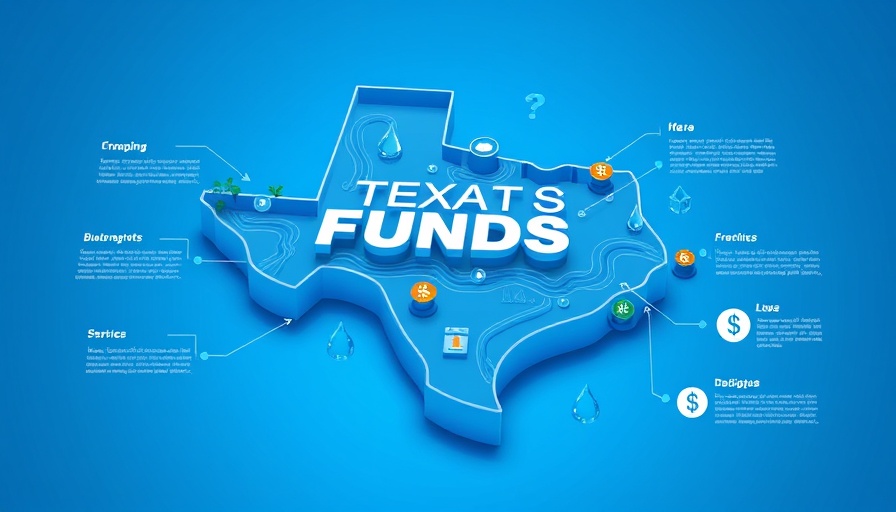
Critical Legislation for Texas' Water Future
The Texas House has taken a crucial step in addressing the state's escalating water crisis by passing House Joint Resolution 7. With an overwhelming majority of 138-6, this legislative measure seeks to put before voters the option to allocate $1 billion annually for water projects aimed at alleviating the supply shortage. Texas, facing severe challenges such as climate change, rapid population growth, and deteriorating infrastructure, must act swiftly to secure its water future.
What This Funding Means for Texans
This potential funding of $1 billion is not merely a number; it represents hope and progress for millions of Texans concerned about water scarcity. State Rep. Cody Harris emphasized that the Legislature now has a unique opportunity to confront Texas' increasing water demands head-on. The House resolution, importantly, does not dictate how the funds will be allocated; instead, the Texas Water Development Board will manage the ultimate decisions regarding disbursement. This approach may raise questions in some circles, as it leaves the allocation open to the agency's discretion.
A Closer Look at the Proposed Senate Measures
The Senate has proposed its own version of funding through Senate Joint Resolution 66, which aims to provide voters with dedicated funding while specifying how the money should be spent. Senator Charles Perry’s plan designates 80% of the funds to create new water supply projects, including innovative solutions like desalination and produced water treatment plants. The remaining 20% targets critical infrastructure upgrades. This specificity might lead to more targeted improvements, however, it is essential for both chambers to align their proposals before reaching the voting stage.
Urgent Call to Action
Texas is needed to act decisively before it faces a crisis where water demand surpasses supply completely. The statistics are staggering; a historic drought could render the state's existing water supplies insufficient without the comprehensive projects outlined in the state water plan. By investing in these water projects now, Texas can substantially increase its resilience against droughts and changing weather patterns.
Tackling Infrastructure Challenges
Within the larger picture of Texas' water issues lies the urgent need to address the aging infrastructure of the water system. Many of Texas' pipes and treatment plants are outdated, resulting in leaks and inefficiencies that exacerbate the water shortage problem. Proposals to improve this infrastructure call for innovative solutions, such as modernizing existing systems to prevent water loss while also considering greener alternatives to meet future demands.
Future Predictions and Necessary Actions
As Texas continues to grapple with its water challenges, experts suggest that proactive legislative efforts will be critical. Should these proposals succeed, not only will Texas improve its immediate water supply needs, but it may also set an influential precedent in water management for other states facing similar crises. Furthermore, they will enhance public awareness around water conservation and the need for sustainable practices.
Engaging the Public in Water Conservation
The ongoing discussion around Texas' water issues presents an immediate opportunity for voters to engage in the future of their state's water resources. Public support for these funding proposals could signify a broader commitment to water conservation, impacting not just legislation but also local culture regarding resource management. By voting to fund these initiatives, Texans can play an essential role in safeguarding their environment and ensuring sustainable water access for generations to come.
Final Thoughts on Water and Future Legislation
In the coming months, Texans should remain informed about developments related to water legislation and consider participating in local discussions on the issue. As water needs grow, so does the urgency for thoughtful solutions that benefit everyone in the state. Ultimately, the commitment to proper funding and infrastructure can secure a more sustainable future for Texas.
 Add Element
Add Element  Add Row
Add Row 



Write A Comment